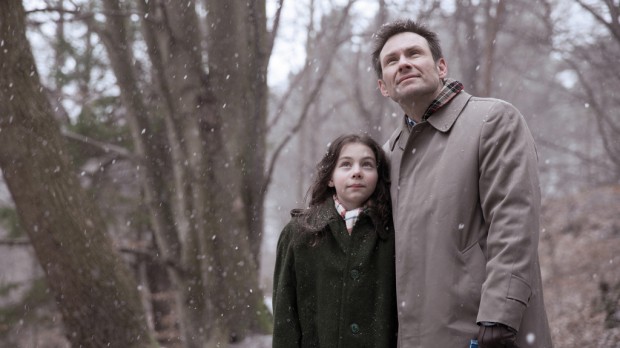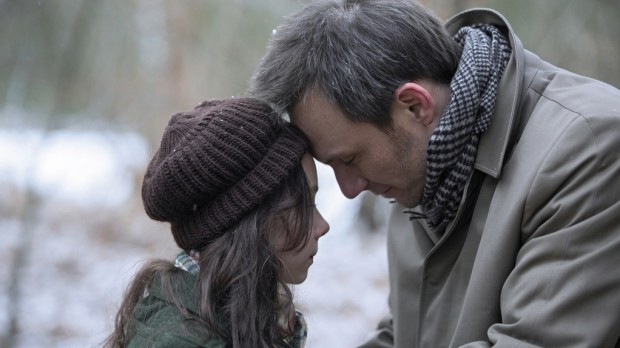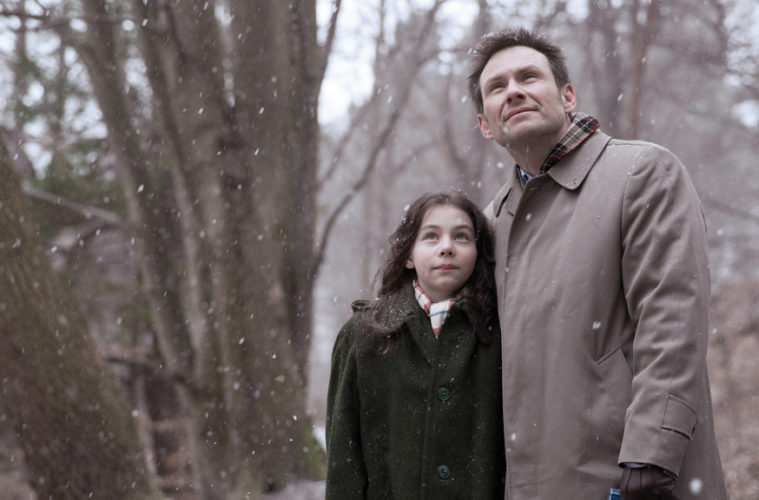
It’s been a good while since we’ve had Christian Slater inhabit a major role in a publicity-surrounded production, which can only make the impact of his work in Lars von Trier‘s Nymphomaniac all the more welcome. But, more than a turn with decent screen time, it’s the sort of lasting, unique character work that defined his earlier appearances — something he seemed fairly aware of in our conversation.
Consider me pleasantly surprised when Slater turned out both very loquacious and remarkably open about his process, at the same time evincing an active interest in various ways his director can find the pulse of a moment and make the actors inside it come alive. For a helmer with behind-the-scenes stories as notorious as von Trier, one will be surprised at the freedoms apparently offered therein. Read below for the full talk:
A friend suggest I ask Pump Up the Volume questions, but I’m actively interested in what’s happening with your involvement in Nymphomaniac. Although I’ve only seen the first half, your role in it, regardless, is significant for the imprint Joe’s father leaves on the film. I was hoping you could talk a bit about taking that sort of role — where you’re not necessarily in the “present” action, but nevertheless play a crucial part.
Well, yeah, I was thrilled to get this opportunity to play this father. It was certainly an unexpected opportunity; it was wonderful that Lars could see me as this particular character. Certainly when people think of me, they don’t necessarily see me as the dad who has an obsession with nature and trees — you just, normally, wouldn’t cast me in that role. So, I was thrilled to get the opportunity to kind of step outside, perhaps, people’s pre-conceived notion of what I can do. As an actor, I think it’s the thing that I love to do: kind of step outside of myself, really immerse myself in the shoes of someone else.
I remember when we were on the set and talking about leaves, ash trees, all these different aspects to this character, at first I found myself, you know, being a little nervous about, and, at times, maybe rushing through it. I think one of the great differences about making a film in Europe as opposed to America… in America, I think directors and producers tend to be more interested in making sure we “get the day.” You know, you get a set amount of pages that you’re supposed to get on a particular day, and if you don’t “make the day,” you’re in a lot of trouble. I think, on this particular experience, there was a greater focus on getting the moments. So, that was really wonderful; Lars was always there to kind of guide me, take my time, not rush, get myself & the other actors a chance to feel safe, and trust that it wasn’t about getting all the dialogue — it was just about getting special moments.
Was there a surprise in seeing this unfold as you were shooting, or did von Trier advise you on such a strategy beforehand?
I think, based on some of his previous work, I got a sense that he is a director that isn’t afraid to take his time — but, still, being on the set, you don’t necessarily know. It was a new experience for me. The hospital scenes that we shot were shot over a considerable period of time, and he actually made sure there wasn’t a bunch of camera equipment in the hospital room — that we didn’t feel trampled on by a bunch of crew being in the room. He actually had set up his station in another hospital room, away from us. So, really, it was me, Stacy, and the camera man just sort of working together, and he would just let the camera roll for twenty to thirty minutes, at times. So, in doing that, I wasn’t exactly sure what moments he was going to use in the film, but I was very happy with the end result.

There’s a tenderness in the moments of her childhood, here contrasted sharply with the unnerving physicality of those hospital scenes. Hearing you describe this is really fascinating and leads me to wonder: when you’re doing something such as writhing around on the floor, is that rehearsed, or does he just tell you to go?
For a lot of those moments, you get a line in the script, really — sort of a descriptive line of what the idea is, what you’re going to, visually, be conveying — and a lot of that might have just said “father falls to the ground” in the script. I think, because, we did feel safe with each other, and I knew that Stacy had already shot some pretty outrageous things — and was the type of actress to go out there on a limb — I felt safe taking chances with her and being physical with her; I knew that she would be up to the task. But you asked if this was stuff that was discussed before. Not really, no. We didn’t discuss it; it was more about turning the camera on and letting us just go for it.
Did you have much in the way of off-camera discussions with Ms. Martin? It’s often a bits-and-pieces interaction between your characters, and frequently with a different, younger actress, too. Do you discuss the development, or simply let her take that on with her own work?
Well, that is a crazy part about… well, for me, making this project was fascinating, because I did shoot it over the three- or four-month period, but in different sections. I had to shoot it when the leaves were full, during the winter, summer, and fall seasons, so I would come in sort of sporadically, so it was kind of hard to get the sense and communicate. I would hear stories about the stuff they would shoot in-between the parts that I was involved with, which… you know, some stories were very funny. It was interesting to hear how the crew was so excited and titillated on day one of shooting a love scene, and, by the end, everybody had become so desensitized to it that it became, “All right, let’s just do this one.”
So, that was fascinating. It was interesting to see people’s perceptions of shooting sexual scenes change over the course of making this movie, but as far as communicating with Stacy: pretty much, I relied on the stories that I heard of the things she had shot, and just heard genuine, I think, sensitivity as an actress. I mean, she came in really, fully prepared and ready to shoot these scenes. I don’t think she necessarily knew where I was going to be going, but because we captured a lot of the scenes of… because we didn’t rehearse a lot — or much at all, really; we filmed everything we possibly could — I think it added a layer of spontaneity and rawness that, hopefully, makes it a little more realistic and intense.
Does it feel as if you haven’t had that spontaneity in a while? Almost that you were going back a bit?
Of course. It definitely felt like a long time, and this was a project that I was thrilled to get the chance to be a part of and a group of actors that I truly respected and admired; all I can say is that, yes, I am quite addicted to it now, and very excited. I really want to continue moving in this sort of direction. I love being an actor; I love getting the chance to do different things and immerse myself in different kinds of characters. That’s just the goal for me, now, and what I would love to continue to do, and to work with a director, again, like Lars von Trier would be wonderful.

Both Nymphomaniac: Volume I and Volume II are currently available on VOD; the first half enters theaters on Friday, while the second makes its theatrical debut on April 4.

